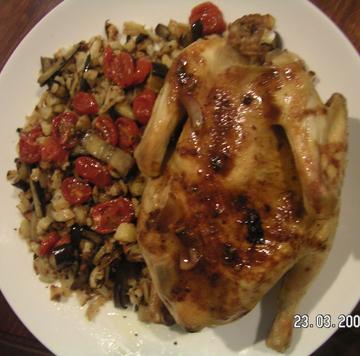Introduction
Transforming elaborate gourmet recipes into accessible weeknight meals requires a systematic approach to recipe deconstruction. The following framework provides a structured method to adapt complex culinary techniques for everyday cooking without sacrificing the essence of the original dish.
The Culinary Reverse Engineering Framework
Phase 1: Recipe Analysis
Core Identification
- Determine the essential flavor profile and textures that define the dish
- Identify which components contribute most significantly to the overall experience
- Separate decorative elements from foundational ingredients
Complexity Assessment
- Evaluate each component based on time requirements, technique difficulty, and equipment needs
- Categorize steps as essential, enhanceable, or optional
- Identify steps that can be completed in advance
Phase 2: Simplification Strategy
Time Distribution
- Divide preparation across multiple days when beneficial
- Identify components that improve with rest (e.g., marinades, braises, doughs)
- Create a preparation timeline working backward from serving time
Technique Substitution
- Replace labor-intensive methods with simplified alternatives
- Substitute specialized equipment with common kitchen tools
- Convert multiple-step processes into consolidated actions
Ingredient Adaptation
- Identify acceptable commercial substitutes for time-consuming components
- Source quality pre-prepared ingredients for non-essential elements
- Adjust ingredient quantities to reduce preparation complexity
Phase 3: Implementation
Component Preparation
- Organize preparatory work by priority and timing
- Establish clear transition points between components
- Create a logical workflow that minimizes kitchen disruption
Assembly Strategy
- Design a simplified plating approach that maintains visual appeal
- Focus presentation on highlighting the essential elements
- Develop an efficient sequence for final assembly
Practical Application Example
Original: Classic Beef Wellington
Simplified Approach:
- Core Identification: The essence lies in the contrast between tender beef, savory mushroom duxelles, and crisp pastry.
- Preparation Distribution:
- Weekend: Prepare and freeze mushroom duxelles
- Day Before: Season and sear beef, refrigerate
- Day of Serving: Assemble and bake
- Technique Substitution:
- Replace homemade puff pastry with quality store-bought
- Substitute traditional crêpe layer with prosciutto for moisture barrier
- Use food processor for mushroom preparation instead of hand-chopping
- Assembly Efficiency:
- Construct Wellington on parchment for easy transfer
- Reduce resting times between steps while maintaining critical pauses
- Simplify decoration while preserving steam vents
Summary
Approaching complex recipes through this systematic framework allows home cooks to maintain the integrity of sophisticated dishes while adapting them to weeknight constraints. By identifying core elements, distributing preparation strategically, and implementing targeted substitutions, even elaborate culinary creations become accessible for everyday enjoyment.
This approach transforms intimidating gourmet recipes into approachable projects, encouraging culinary exploration without overwhelming time commitments or technical demands.

.jpg)



0 Comments